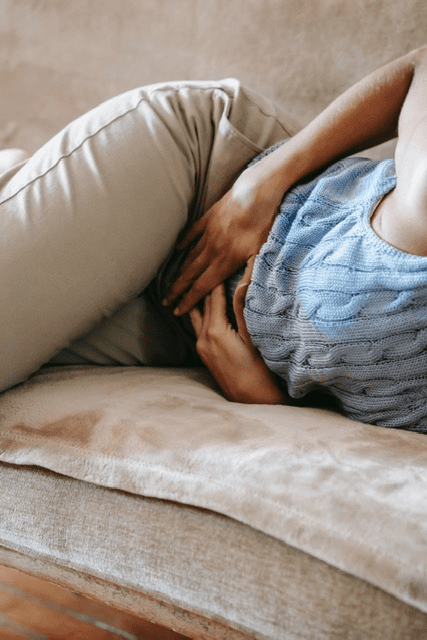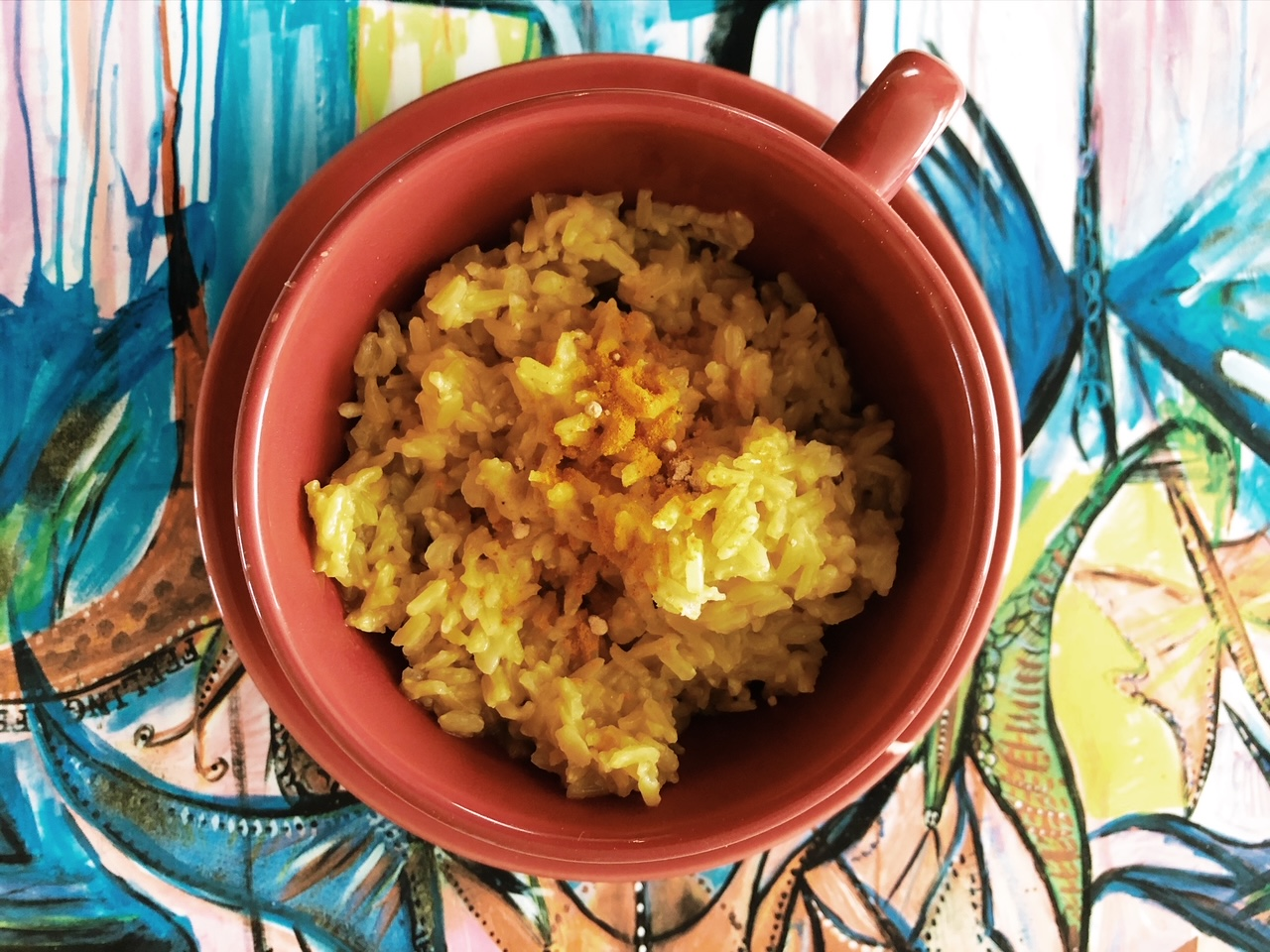The menstrual cycle – how it works according to Ayurveda
According to Ayurveda, the menstrual cycle follows the seasons. spring, winter and summer. In Sanskrit, the menstrual cycle is translated from two words, namely “rtu“, which means season and “arthava“which means menstrual blood. The different doshas, namely vata, pitta and kapha, characterize the different phases of the cycle. Ayurveda teaches how to live in harmony with nature and with oneself. Balance is achieved by adapting your lifestyle to the seasons and, for women, to the menstrual cycle. The food we eat matters as much as how we think about ourselves. Self-love and body acceptance are important aspects of good health. Trauma, stress, relationships with family and friends have an impact on hormonal balance.
The role of women in Ayurveda
Women are seen as creators. Being a woman includes three aspects: giving, intuition and strength. On a subtle level, the woman is connected to Agni, our digestive fire. Therefore, good digestion is important for the menstrual cycle, hormonal balance and women’s health. A well-functioning Agni nourishes all body tissues. Through the power of fire, the woman is united with the shakti (life energy) and the moon. A woman’s menstrual cycle follows the lunar phase. You can menstruate or ovulate on a full moon or a new moon, although most women menstruate on a new moon.
Today’s woman
It is no longer enough just to take care of the children. We want to have a career and also be able to have children. This, in turn, creates performance and ambition and increases pitta energy, especially among women 30+ who are already of pitta age. If you ask me, there is no more important work than helping people grow and find their place in the world.

For me personally, working and earning my own money gives me confidence and a different perspective: moving from dependency to independence. Maybe for you it is something else. We should also be beautiful, slim, exercise and socialize with friends, and take care of the whole family. Such conditions create stress in the body and mind and an imbalance in the menstrual cycle. Women’s success is often built on ‘size zero’, beauty, success and self-sacrifice. Ayurveda, on the other hand, gives you access to your own intuition: understanding your body and being able to sense what you really need.
Menstruation – what does it mean
Menstruation itself is an internal and external purification. The rejection of the uterine lining should not hurt. You should not bleed too much or too little and the bleeding should not be slimy. The color of the blood should be dark red and stains in the panties should be washable. During the menstrual phase of the cycle, the body secretes pitta Ama with the help of Apana Vayu, the descending energy. The body gets rid of pitta excess in the form of blood and mental and physical ama. Read more about Ama and gut health here to understand what Ama means. For this reason, the premenstrual period can cause physical, emotional and mental imbalances. “Internal heat” is eliminated from the lower abdomen.
Apana Vaya controls the excretion from the body, namely urine, feces, menstrual blood and pushing out the baby. Apana Vata’s area is the pelvis, bladder, colon, uterus, ovaries and thighs. It is the driving force behind female discomfort and an under or over function is debilitating. A pitta woman who is very stressed (very pitta ama!) and very active will feel a great relief when her period starts.

Pitta women’s menstrual blood is cherry red and has a strong smell. They experience an altered sense of warmth and are often emotionally irritable in the second phase of the menstrual cycle. The menstrual flow in kapha women is often sluggish and slimy. Abundant bleeding leads to a weakened rakta dhatu. If she has a lot of lumpy blood and accumulates water before her period, it may be due to an excess of kapha in her body. Buttoning your trousers becomes difficult because of the swelling. In general, women often experience imbalances in two doshas.
Aspects of female physiology during the menstrual cycle
Agni
A well-functioning Agni ensures that the dhatus (tissues) are nourished and that you are mentally well (Caraka Samhita Ci.15.3f). The 13 Agnis in the body are responsible for transforming nutrition at different levels, so that Ojas is formed. The bait should not be too strong or too weak. What, how and when you eat, as well as stress and thoughts affect Agni.
Dhatu
Ojas provides good immunity and health and translates as life essence. At the tissue level straight and shukra dhatu are most important for the menstrual cycle. The seventh dhatu (shukra) is nourished only when the previous dhatus are well nourished. Rakta dhatu is the blood and secretes pitta and pitta ama.
Shukra dhatu stands for reproductive organ, but circulates throughout the body and can thus be compared to the endocrine (hormone) system. This is the force that acts on a woman’s breasts, ovaries, uterus and vagina. Moreover, shukra dhatu nourishes the Ojas. Shukra dhatu, among other things, shapes embryos and improves a woman’s radiance, strength and energy. Disturbed doshas reduce shukra dhatu in quality and quantity and therefore fertility is also reduced.
Srota
Srotas are the body’s transportation routes and the channel of menstrual blood is named artava srota. Artava is the secondary tissue that strengthens the shukra dhatu. There are foods that block artava srota and form ‘kleeda’, a sticky slag that is stored between cells. Sugar-blocking foods include too much cheese, yogurt and chocolate. If you want to know more about the different doshas, dhatus, srotas and Agni, you can watch the “Basics of Ayurveda” webinar on my Ayurveda channel.
The menstrual cycle according to Ayurveda

Kapha phase – follicular phase
The transitions to the different menstrual phases are fluid and harmonious. The first menstrual phase after menstruation means that the kapha energy increases in its presence. The uterine lining grows due to the rising estrogen, which makes the endometrium more receptive to a fertilized egg. The woman usually feels beautiful and strong in the follicular phase. Kapha energy makes her experience an ‘inner’ spring. She may also experience an increased sex drive and fuller breasts.
The earth and water elements dominate and she needs lightness on all levels, such as easily digestible and warm food, and baiting herbs. Activity is good and a balanced woman finds it easy to implement projects and ideas during that period. In a kapha-dominant woman, this phase is much longer, which also results in heavier and longer bleeding. Under stress and in menopause it is shorter. The follicular phase thus varies in length, but generally lasts between 12 and 16 days.
Ovulation – the peak of the menstrual cycle
Estrogen is at its highest during ovulation, which is the Pitta festival (high summer). During ovulation, the fire ‘boils’ and the kapha energy decreases. The egg detaches if the woman is not pregnant. The hormonal change begins with a decrease in estrogen and an increase in progesterone (the yellow-body hormone). The endometrium is transformed to optimize the implantation of the fertilized egg. The cervix opens up and welcomes the sperm, ie. that a woman can only get pregnant during this time. During high summer, a woman should avoid heat in any form, such as taking a sauna or eating highly spiced food.
Pitta phase – luteal phase
The second menstrual phase after ovulation is the phase in which the pitta predominates. Due to the rise in progesterone, the lining of the uterus matures to accommodate the fertilized egg. The function of the thyroid gland is affected, causing a rise in metabolism and body temperature. Ama accumulates in the lower abdomen as a result of an increased pitta.
The luteal phase takes about 12 to 14 days and with the help of the Apana Vayu pitta ama is secreted. If Apana Vayu does not move downwards, you may suffer from headaches or abdominal cramps. Increased pitta and vata energy can further complicate premenstrual conditions and cause physical and emotional imbalances such as mood swings, hot flashes, brain fog and acne. The fire and air element increases in its presence and the woman may be in great need of clarity.
Measures pitta imbalance
The Pitta woman needs to reduce stress by taking a break from everyday life. It is best to exercise moderately and not to exhaust yourself completely. The challenge is to pay attention without seeing it as a weakness. Pitta time is summertime and a woman should engage in pitta-balancing activities and diet if she has pitta symptoms.

Vata phase – menstruation
Menstruation is a time when the body suffers from a lack of hormones. Estrogen and progesterone are low and estrogen rises again at the end of your period. A woman in balance is creative and empathetic. Vata, pitta, vata-pitta imbalances can cause cramps, pain and a sense of inflammation. Just before your period, an elevated vata leads to anxiety, trouble sleeping and constipation. The bleeding phase takes between 3 and 7 days and should release more than 80 ml of blood. Apana Vayu is responsible for the downward flow and if it goes up instead of down, the woman needs to show Apana Vayu that the energy should go down.
Measures in case of vata imbalance
She counteracts vata imbalances through a warm foot bath, foot massage or heating pad on the lower back or inner thigh. Regular self-massage with warm oil a week before your period can help. Daily, she can massage up the outer thigh and down the inner thigh with sweeping movements to reinforce the downward movement of Apana Vayu. As menstruation is an external and internal cleansing, she should not be too active, but rest and take it easy. During menstruation, she can do soft and calm yoga, yin yoga, yoga nidra, meditate and practice self-reflection. For vaginal problems, a vaginal balancing diet a week before your period is good. Liver-strengthening and anti-aging herbs are good to use in cooking.
Contraceptives
Many women use contraceptive methods such as hormonal IUDs or birth control pills to avoid getting pregnant, for acne or PMS. Most people are happy with the results, but do not know how much it actually affects the natural menstrual cycle, internal and external balance and fertility. As women, we are subject to a double burden nowadays that requires a lot of energy. But one thing gets her thinking: taking hormones also means giving up control of your own body!
There is no information on contraception in the Ayurvedic scriptures. Back then, women followed their natural menstrual cycle and avoided intercourse during ovulation. The women probably used a method similar to the justice method and intuition. Contraceptive pills are considered ‘semi-biotics’ and have a negative impact on gastrointestinal health and gut flora and therefore contraceptive pills also affect immunity. Most of the immune system is rooted in the gastrointestinal tract, if you didn’t already know.
In conclusion to the menstrual cycle
What a woman should do for different ailments depends entirely on her prakriti (personality and constitutional type) and vrikriti (imbalance). So it’s good to take the time to get to know yourself and to pay attention to how your mood and body change during your cycle. Depending on which dosha is out of balance, she should adjust her lifestyle and diet. In my experience, it can take a few menstrual cycles to feel an improvement.
Usually you need to review your routines and deal with the stress. I usually map out in an Ayurvedic dietary counseling if there is a problem with digestion, Agni and Ama. I usually work holistically and map out different aspects of a woman’s life. Patience is a virtue.
If you want to know more about digestion, Ama and Agni, read the blog post “Gut health from an Ayurvedic point of view“. However, if you are curious to know more about the menstrual cycle, dose-specific imbalances and diet, you should watch the webinar “Understanding your menstrual cycle” on my Ayurveda channel. If you are curious how yoga can help you with symptoms and balance, read about hormone yoga here.
Sources:
From the book: Das neue Ayurveda Praxis Handbuch, Hans Heinrich Rhyner
eWebinar Rosenberg Ayurveda Akademie “Ayurveda for women and stress-related illnesses”s


